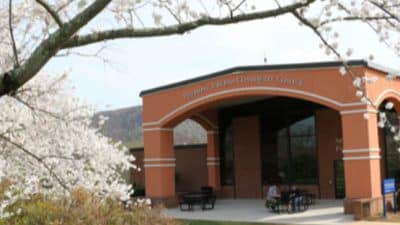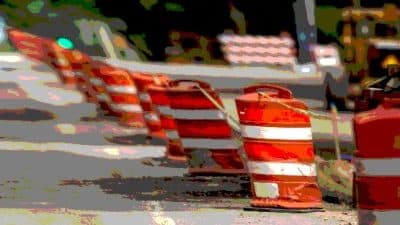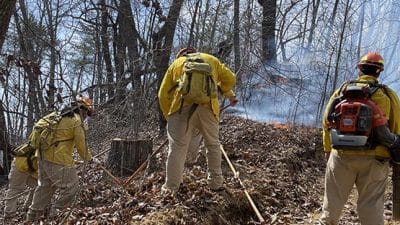
The finding, which comes after more than two years of experimental research in a protected area on Marine Corps Base Camp Lejeune in North Carolina, was recently published in the journal Proceedings of the Royal Society B.
Researchers determined that the red-cockaded woodpecker carries spores from the fungus Porodaedalea piniand other fungal species on its beak, wings, and feet and introduces them to cavities of trees that are not yet infected, according to senior author Jeff Walters, the Harold Bailey Professor of Biological Sciences in theCollege of Science.
Michelle Jusino, lead author on the paper and Walter’s former doctoral student, swabbed the beaks, wings, and feet of 11 woodpeckers and sampled 60 tree cavities, half of which were not accessible to the woodpeckers. The holes that were accessible to the birds had the fungi growing in them, while the others did not, indicating that the birds play a role in dispersal.
“Our findings provide the first experimental evidence of a symbiosis between woodpeckers and fungi, two groups of organisms who are often assumed to work together,” said Jusino, who is now a research wildlife biologist with the U.S. Forest Service. “The common assumption is that the fungi help the birds, and that very well may be the case as well, but here were have shown that the birds help the fungi. The next step is to show that the fungi found in the excavations actually do help the birds complete the difficult task of excavating a cavity in the heartwood of a living pine tree.”
Walters, who has studied the red-cockaded woodpecker for almost 40 years, said these longleaf pine cavities are extremely important to the bird’s survival. As cooperative breeders, many woodpeckers live at home with their parents until they are able to acquire their own cavities. Building a new cavity is a process that could take as long as 13 years.
“In order to create their homes in the preferred longleaf pine, these birds must dig a tunnel through the outer surface of sap wood, and the tree responds by releasing sap that could trap and kill the bird if it is not careful,” said Walters, who is also affiliated with the Global Change Center at Virginia Tech and the Fralin Life Science Institute. “Once the bird gets through this layer, it reaches heartwood which is a bit less risky but still takes years to excavate.”
The wood-eating fungus appears to speed up the process.
Creating one’s own home is desirable because only home-owning birds have a chance to breed. Only two birds (one female and one male) breed per family, and this ranking is based on seniority.
The red-cockaded woodpecker is the only woodpecker that chooses to make its home in living pine trees, and the reason for this preference is still a mystery to scientists. To accommodate the birds, the trees must be at least 100 years old and relatively healthy —when a tree dies, it is abandoned.
The highly specific habitat preference does not bode well for the bird’s endangered status, but in past years Walters and his group, with help from a National Science Foundation grant and other funding from the Department of Defense, have assisted by drilling holes in the trees, creating hundreds of new cavities and attracting 83 new family groups to the Camp Lejeune area. This management project was repeated with populations in the Sandhills of North Carolina and Eglin Air Force Base in Florida, and their successes led the U.S. Fish and Wildlife Service to declare these two populations recovered.
With a little help from their friends — both fungi and humans — these quirky birds have a better chance at survival.










